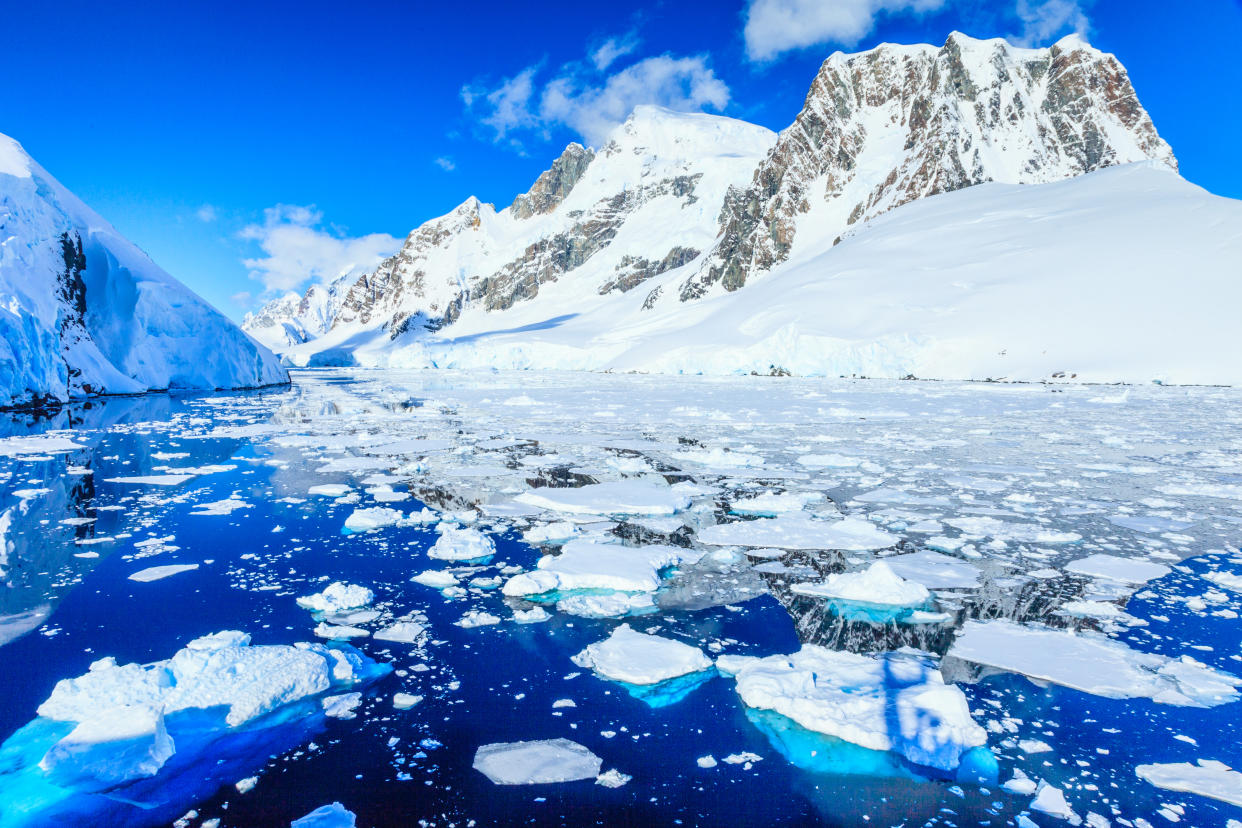New Antarctica fears as lakes of melted ice make ice sheets ‘buckle’

Global warming is leading to lakes of melted water on top of Antarctica’s ice shelves – and the weight may be causing the ice shelves to ‘flex’ and break up.
A team of University of Cambridge researchers measured how much the McMurdo ice shelf in Antarctica flexes in response to the filling of meltwater lakes on its surface.
The results suggest that melting surface ice may weaken Antarctic ice shelves – and may have triggered ecent ice shelf breakup around the Antarctic Peninsula.
As the climate continues to warm, more and more ice shelves may become susceptible to flex, fracture and break up over the coming century.
MORE: ‘I don’t regret it’: Pregnant British schoolgirl who fled London to join Islamic State wants to return to UK
MORE: Heroin addict mugger convicted of killing 100-year-old widow in street robbery
Ice shelf break-ups are linked to sea level rises – and researcher Professor Doug MacAyeal from the University of Chicago believes meltwater might have led to the catastrophic breakup of the Larsen B Ice Shelf.
Using helicopters, snow machines and their own two feet, the researchers set up a series of pressure sensors to monitor the rise and fall of water levels in depressions which filled to become lakes, and GPS receivers to measure small vertical movements of the ice shelf.
‘It was a lot of work to obtain the data, but they reveal a fascinating story,’ said MacAyeal. ‘Most of the GPS signal is due to the ocean tides, which move the floating ice shelf up and down by several metres twice a day.
‘But when we removed this tidal signal we found some GPS receivers moved down, then up by around one metre over a few weeks whereas others, just a few hundred metres away, hardly moved at all.
‘The ones that moved down then up the most were situated where lakes were filling and draining, and there was relatively little movement away from the lakes.
‘It is this differential vertical motion that shows the ice shelf is flexing. We’d anticipated this result, but it was very nice when we found it.’

 Yahoo News
Yahoo News 

